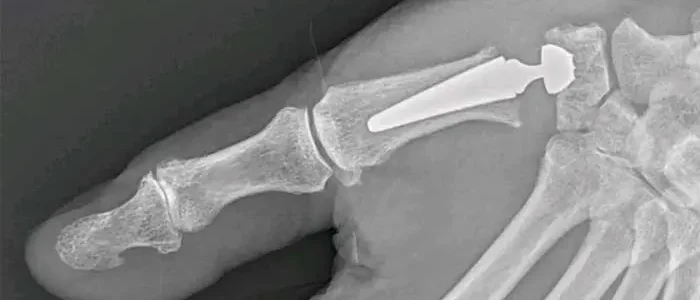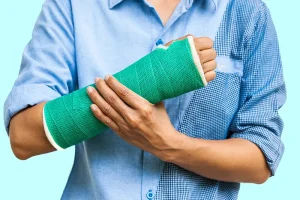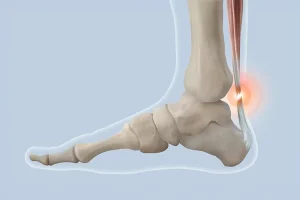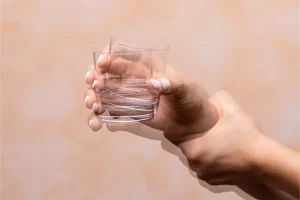Rhizarthrosis
Why does rhizarthrosis occur and how can we treat it effectively?
Home » Orthopedic Surgery » Rhizarthrosis
Conditions Treated

It’s not just simple fatigue. It could be Rhizarthrosis, the condition that silently wears down your joint. Discover what this invisible wear and tear means and how it can change your routine.
Find out how you can manage the symptoms and what treatment options are available.
Book an Appointment
What is rhizarthrosis?
Rizarthrosis is a form of osteoarthritis located at the base of the thumb, between the trapezium bone and the first metacarpal bone, also known as thumb osteoarthritis. It is a degenerative condition that affects the joint at the base of the thumb.
It occurs due to wear and tear of the cartilage between the trapezium bone and the first metacarpal, leading to pain, stiffness, and difficulty in movement.
My thumb hurts: symptoms
- Visible swelling or deformity;
- Stiffness and weakness when grasping objects;
- Persistent pain at the base of the thumb.

Factors that may contribute to the onset of rhizarthrosis
- Female gender: the condition is more common in women, especially after menopause;
- Age over 40: the risk increases with age;
- Excess weight: obesity can aggravate cartilage wear, even though the big toe joint does not directly support the body’s weight;
- Genetic predisposition: ligament laxity, joint malformations, or other inherited characteristics can promote the onset of the disease;
- Previous trauma: fractures or sprains that have affected the big toe joint can lead to cartilage degeneration over time;
- Inflammatory diseases: such as rheumatoid arthritis or other conditions that weaken or damage the structure of the articular cartilage;
- Repetitive or strenuous activities: professions or hobbies that involve frequent grasping, pressing, or manipulating objects can overwork the joint.
Diagnosis of rhizarthrosis
Your doctor can diagnose this condition through:
- Clinical examination: The doctor will assess the pain, stiffness, and deformities at the base of your big toe using tests such as pressing on the joint.
- X-ray: This confirms cartilage wear and bone changes (e.g., osteophytes).
- Medical history: Repetitive activities or previous trauma are taken into account.
Sometimes, ultrasounds or MRIs may be recommended for additional details. Consult a specialist for an accurate diagnosis.
Treatment of rhizarthrosis
If the pain becomes unbearable, we may recommend surgery, either by implanting a prosthesis or removing bone, thus preventing painful friction.
At VenArt Clinic, we offer personalized solutions to restore your mobility and reduce pain:
Non-surgical treatment
- Custom orthotics to support the joint;
- Corticosteroid injections to reduce inflammation;
- Physical therapy to improve flexibility.
Rizarthrosis surgery
- Arthroscopy or trapeziectomy for severe cases;
- Minimally invasive procedures performed by specialized surgeons.
Rhizarthrosis brace
A brace stabilizes the big toe joint, reducing pressure on the area affected by osteoarthritis. It is worn daily for several weeks or months to reduce pain and improve mobility, providing an effective non-surgical solution in the early stages.
For personalized recommendations, consult an orthopedic specialist.

Recovery from rhizarthrosis of the thumb
Non-surgical treatment
If osteoarthritis is managed without surgery, recovery involves:
- Rest and temporary immobilization: Wearing a brace or bandage to reduce stress on the joint;
- Physical therapy: Specific exercises to improve mobility and strengthen the muscles around the joint without overworking the affected area. Examples include gentle flexion/extension or rotation of the thumb;
- Heat or cold therapy: Applying warm compresses to relax the muscles or cold compresses to reduce inflammation and pain;
- Medication: Non-steroidal anti-inflammatory drugs (NSAIDs) or painkillers, as recommended by your doctor, to control pain;
- Alternative therapies: Sometimes, therapeutic massage or acupuncture can be helpful.
Post-surgical recovery
- Initial immobilization: After surgery, the hand is immobilized in a splint or cast for several weeks (usually 4-6 weeks, depending on the procedure).
- Physical therapy: After immobilization is removed, active rehabilitation begins with exercises to regain range of motion and strength. The therapist may recommend progressive exercises, such as gently grasping small objects;
- Pain management: Postoperative pain is controlled with medication and, sometimes, physical therapy.
- Duration: Full recovery can take between 3 and 6 months, and in the case of arthrodesis (joint fusion), mobility will be limited, but the pain should disappear.
- You will have a bulky bandage and a support splint applied after surgery.
- Exercises: Light mobilization exercises can begin 3 days after surgery to prevent ankylosis and adhesions, especially in elderly patients.
- Physiokinesitherapy: will begin approximately one month after surgery;
- Drainage tube: will be removed within the first 1-2 days after surgery;
- Operated hand: must be kept elevated above heart level for at least 7 days, including during sleep;
- Showering: is allowed 72 hours after surgery;
- Sutures: will be removed between 10 and 14 days after surgery;
- Check-ups are necessary: regular medical check-ups, both to assess healing and to monitor progress.
Why choose VenArt Clinic?
- Team of specialized doctors with extensive experience;
- Modern technology and innovative methods;
- Minimally invasive treatments for rapid recovery;
- Personalized approach for each patient;
- Proven results and numerous success stories in orthopedic surgery;
- Warm and professional atmosphere;
- Complete services in one location.
Schedule an appointment now!
Fill out the form below or call us to schedule a consultation.
Our specialists will answer all your questions and provide you with a treatment plan tailored to your needs.
Medical Team
Frequently Asked Questions
What causes rhizarthrosis?
Joint wear due to age, trauma, or excessive use.
How is rhizarthrosis diagnosed?
Through clinical examination and X-rays performed by a doctor.
Is there a treatment for rhizarthrosis?
Yes, it includes medication, physical therapy, orthotics, or, in severe cases, surgery.
Can I prevent rhizarthrosis?
Not completely, but avoiding overuse and maintaining joint health helps.
How long does recovery take after surgery?
Between 3 and 6 months, depending on the type of intervention.
Does rhizarthrosis heal on its own?
No, but the symptoms can be effectively managed with treatment.
Who is more prone to rhizarthrosis?
Women over 50 and those with a family history of osteoarthritis.
Can I continue my daily activities with rhizarthrosis?
Yes, with adjustments and avoiding movements that aggravate the pain.








